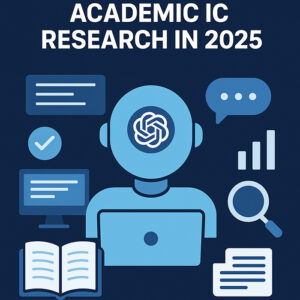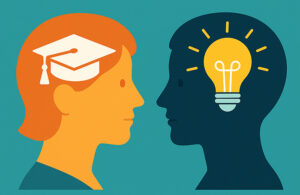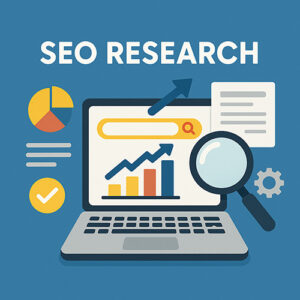Building a Better Future: Understanding Sustainable Development
Introduction: Why Sustainable Development Matters
Imagine building a house on a foundation that slowly crumbles. No matter how beautiful the structure, it will eventually collapse. For generations, much of human development has followed this pattern—creating prosperity and technological advances while inadvertently undermining the very foundations that support our existence: ecological systems, social cohesion, and long-term economic stability.
Sustainable development represents a fundamental shift in how we approach progress. Rather than pursuing economic growth at the expense of environmental health and social equity, sustainable development recognizes that true prosperity can only be achieved when all three dimensions—environmental, economic, and social—are in balance and mutually reinforcing.
This approach has never been more crucial. We face unprecedented challenges:
- Climate change threatens to disrupt ecosystems, economies, and communities worldwide
- Biodiversity loss is occurring at rates far exceeding natural extinction
- Resource depletion undermines future economic possibilities
- Persistent poverty and growing inequality leave billions of people unable to meet basic needs
- Rapid urbanization creates both opportunities and profound challenges
These interconnected crises share a common thread: they result from development patterns that prioritize short-term gains over long-term sustainability. The good news is that we already have many of the tools, technologies, and frameworks needed to chart a different course—one that meets the needs of the present without compromising the ability of future generations to meet their own needs.
This guide explores the concept of sustainable development—its origins, principles, and practical applications—and how it offers a pathway to addressing our most pressing global challenges.
The Evolution of Sustainable Development
Historical Context
The concept of sustainable development didn’t emerge overnight but evolved through decades of growing awareness about the tensions between economic development, environmental protection, and social welfare.
1960s-1970s: Environmental Awakening
The publication of Rachel Carson’s “Silent Spring” in 1962 brought public attention to the environmental consequences of pesticide use, helping catalyze the modern environmental movement. The 1972 United Nations Conference on the Human Environment in Stockholm marked the first major international meeting on how human activities were harming the environment and putting human well-being at risk.
During this period, the Club of Rome’s influential report “The Limits to Growth” (1972) used computer modeling to demonstrate that continued economic growth on a finite planet would eventually lead to resource depletion and environmental degradation. While controversial, the report sparked important debates about sustainable economic models.
1980s: Connecting Environment and Development
By the 1980s, it became increasingly clear that environmental protection and economic development were not necessarily opposing goals but could—and should—be pursued together. The term “sustainable development” gained prominence with the publication of the Brundtland Commission’s report “Our Common Future” in 1987, which provided what remains the most widely cited definition:
“Sustainable development is development that meets the needs of the present without compromising the ability of future generations to meet their own needs.”
This definition emphasized two key concepts:
- The concept of needs, particularly the essential needs of the world’s poor
- The idea of limitations imposed by technology and social organization on the environment’s ability to meet present and future needs
1990s-2000s: From Concept to Action
The 1992 Earth Summit in Rio de Janeiro marked a watershed moment, producing several important agreements including the Rio Declaration, Agenda 21, and the United Nations Framework Convention on Climate Change. These documents moved sustainable development from concept to action plans.
The 2000s saw the establishment of the Millennium Development Goals (MDGs), which set targets for reducing poverty, hunger, disease, and environmental degradation by 2015. While progress was made on many MDGs, implementation was uneven, and critics noted that environmental sustainability was not sufficiently integrated with other development goals.
2010s-Present: Integrated Approaches
Building on lessons from the MDGs, the United Nations adopted the 2030 Agenda for Sustainable Development in 2015, including 17 Sustainable Development Goals (SDGs) with 169 targets. The SDGs represent a more integrated approach, recognizing the interconnections between environmental, economic, and social dimensions of sustainable development.
In parallel, the 2015 Paris Agreement on climate change set global goals for reducing greenhouse gas emissions to limit global warming. Together, these frameworks provide a comprehensive roadmap for sustainable development in the 21st century.
Defining Principles
Through this evolution, several core principles of sustainable development have emerged:
Intergenerational Equity: The principle that future generations should have at least the same capacity to meet their needs as the current generation
Intragenerational Equity: The principle of fairness in the distribution of resources, opportunities, and burdens within the current generation, including addressing poverty and inequality
Precautionary Principle: Where there are threats of serious or irreversible damage, lack of full scientific certainty should not be used as a reason to postpone cost-effective measures to prevent environmental degradation
Systems Thinking: Recognizing the complex interconnections between environmental, economic, and social systems, and the need for integrated approaches
Participatory Decision-Making: Ensuring that those affected by development decisions have meaningful input into those decisions
Common But Differentiated Responsibilities: Acknowledging that all states have a common responsibility to address global environmental problems, but with different capabilities and contributions to environmental degradation
These principles provide ethical and practical foundations for implementing sustainable development in diverse contexts around the world.
The Three Pillars of Sustainable Development
Sustainable development is commonly conceptualized as resting on three fundamental pillars: environmental, economic, and social sustainability. While sometimes presented as separate dimensions, in practice, they are deeply interconnected and mutually reinforcing.
Environmental Sustainability
Environmental sustainability focuses on maintaining the natural capital that provides resources and ecosystem services essential for human survival and well-being. This includes:
Protecting Biodiversity: The variety of plant and animal species and the ecosystems they form is crucial for ecological resilience, food security, medicine, and cultural values. Current extinction rates are 100-1,000 times higher than natural background rates, representing an urgent sustainability challenge.
Maintaining Ecosystem Services: Healthy ecosystems provide services like clean water, air purification, pollination, climate regulation, and flood control. For example, forest ecosystems help regulate water cycles, prevent soil erosion, and sequester carbon. Wetlands filter pollutants and buffer against flooding.
Reducing Pollution: Contamination of air, water, and soil threatens both environmental and human health. Key pollution challenges include:
- Air pollution, which causes about 7 million premature deaths annually
- Plastic pollution, with about 8 million tons entering oceans each year
- Chemical pollution from industrial processes, agriculture, and consumer products
Addressing Climate Change: Rising greenhouse gas concentrations are warming the planet, leading to more frequent and intense extreme weather events, sea-level rise, and disruptions to ecosystems and human systems. Climate change interacts with and exacerbates many other environmental challenges.
Resource Conservation: Using natural resources efficiently and sustainably to ensure their availability for future generations. This includes renewable resources (like forests and fisheries) and non-renewable resources (like minerals and fossil fuels).
Environmental sustainability requires maintaining these natural systems within certain boundaries or thresholds beyond which irreversible degradation may occur. The concept of “planetary boundaries” proposed by scientists identifies nine critical environmental systems and the safe operating space for humanity.
Economic Sustainability
Economic sustainability involves creating prosperity through systems that are efficient, equitable, and environmentally sound. Key aspects include:
Decoupling Economic Growth from Environmental Impact: Historically, economic growth has been tightly coupled with increased resource use and pollution. Sustainable economic models seek to create prosperity while reducing environmental footprints through efficiency improvements, circular economic approaches, and shifts to less resource-intensive activities.
Green Jobs and Industries: Transitioning to sustainable economic models creates opportunities in sectors like renewable energy, energy efficiency, sustainable agriculture, and environmental services. The International Labour Organization estimates that actions to meet the Paris Agreement could create 24 million jobs in the green economy.
Innovation for Sustainability: Technological and social innovations can create more sustainable products, services, and systems. Examples include renewable energy technologies, sustainable materials, shared economy models, and digital platforms that increase resource efficiency.
Sustainable Finance: Redirecting capital flows toward sustainable activities through mechanisms like:
- Green bonds and sustainability-linked loans
- ESG (Environmental, Social, and Governance) investing
- Carbon pricing and removal of fossil fuel subsidies
- Public finance for sustainable infrastructure
Economic Inclusion: Ensuring economic opportunities and benefits are widely shared rather than concentrated among a small segment of the population. This includes addressing poverty, creating quality jobs, supporting small businesses, and investing in education and skills development.
Economic sustainability recognizes that true prosperity cannot be measured by GDP growth alone but must consider broader measures of well-being, resource efficiency, and distribution of benefits.
Social Sustainability
Social sustainability focuses on maintaining and improving social capital—the relationships, norms, and institutions that enable people to live together peacefully, equitably, and with sufficient opportunity. Key dimensions include:
Poverty Reduction: Despite progress, about 700 million people still live in extreme poverty (less than $1.90 per day). Sustainable development approaches seek to address both income poverty and multidimensional poverty—lack of access to education, healthcare, clean water, electricity, and other essentials.
Food and Water Security: Ensuring reliable access to nutritious food and clean water for all people. Currently, over 800 million people face chronic undernourishment, and 2.2 billion lack safely managed drinking water.
Health and Well-being: Promoting physical and mental health through access to healthcare, reduction of pollution, disease prevention, and healthy environments. The COVID-19 pandemic highlighted the importance of resilient health systems and the connections between environmental conditions and disease transmission.
Education and Skills: Providing quality education and lifelong learning opportunities that prepare people for meaningful work and engaged citizenship in a rapidly changing world. About 258 million children and youth remain out of school, representing a major barrier to sustainable development.
Gender Equality: Ensuring equal rights, responsibilities, and opportunities for people of all genders. Gender equality is both a human rights imperative and a catalyst for sustainable development, as societies that empower women and girls tend to be more peaceful, prosperous, and environmentally responsible.
Social Cohesion and Inclusion: Building societies where diverse groups can participate fully in civic, economic, and social life. This includes addressing discrimination, protecting minority rights, and creating inclusive institutions.
Cultural Sustainability: Preserving cultural heritage, diversity, and traditional knowledge that contribute to identity, belonging, and often contain valuable lessons for sustainable living.
Social sustainability recognizes that human well-being depends not just on meeting material needs but on social connections, meaningful participation, and equitable treatment.
The Integration Challenge
While it’s useful to examine these pillars separately, the greatest challenge—and opportunity—of sustainable development lies in their integration. Actions that advance all three pillars simultaneously create the most powerful and durable solutions.
For example:
- Renewable energy (like solar or wind) can reduce carbon emissions (environmental), create jobs (economic), and provide affordable electricity to underserved communities (social)
- Sustainable agriculture can preserve soil health (environmental), improve farmer livelihoods (economic), and enhance food security (social)
- Green building designs can conserve resources (environmental), reduce operating costs (economic), and create healthier living spaces (social)
However, there are also potential tensions or trade-offs between different dimensions. Short-term economic priorities may conflict with environmental protection, or well-intentioned environmental policies might have disproportionate impacts on vulnerable communities. Addressing these tensions through thoughtful, integrated approaches is at the heart of sustainable development practice.
Sustainable Development in Action
Sustainable development is not just a theoretical concept but a practical approach being implemented in various ways around the world. Here are some key domains where sustainable development principles are being applied:
Sustainable Cities and Communities
With over half the world’s population living in urban areas—projected to reach two-thirds by 2050—cities are crucial battlegrounds for sustainable development. Sustainable urban development includes:
Smart Growth and Urban Planning: Creating compact, mixed-use developments that reduce transportation needs, preserve open space, and create livable communities. Cities like Portland, Oregon, and Barcelona, Spain, have implemented urban growth boundaries and “superblocks” that prioritize pedestrians over cars.
Green Buildings: Constructing and retrofitting buildings to reduce energy and water consumption, use sustainable materials, and provide healthy indoor environments. Standards like LEED (Leadership in Energy and Environmental Design) and Passive House guide these efforts. Buildings like the Edge in Amsterdam demonstrate how sustainable design can reduce energy use while enhancing occupant comfort and productivity.
Sustainable Transportation: Developing public transit, bicycle infrastructure, electric vehicles, and walkable neighborhoods to reduce emissions and congestion while improving mobility. Cities like Copenhagen have made cycling a primary mode of transportation, with over 62% of residents biking to work or school.
Urban Green Spaces: Creating parks, green roofs, urban forests, and community gardens that provide recreation, improve air quality, reduce urban heat island effects, and support biodiversity. Singapore’s Gardens by the Bay exemplifies how cities can integrate nature into urban environments.
Inclusive Housing: Ensuring access to adequate, safe, and affordable housing for all income levels. Vienna’s social housing program, which houses about 60% of the city’s population, demonstrates how cities can create high-quality, affordable housing.
Resilient Infrastructure: Designing infrastructure systems that can withstand and recover from climate impacts and other disruptions. Rotterdam’s water management system, including water squares that serve as recreation areas in dry weather and retention basins during heavy rain, exemplifies urban climate resilience.
Sustainable Energy Systems
The transition to clean, reliable, and affordable energy is central to sustainable development. Key aspects include:
Renewable Energy Expansion: Rapidly scaling up solar, wind, hydropower, geothermal, and other renewable sources. Countries like Denmark now generate over 50% of their electricity from renewable sources, with some regions achieving even higher percentages.
Energy Efficiency: Reducing energy consumption through improved technologies, building design, industrial processes, and consumer behavior. Japan’s Top Runner program, which continuously raises efficiency standards for appliances and vehicles based on the best-performing models, has driven significant efficiency improvements.
Energy Access: Extending modern energy services to the 760 million people without electricity and 2.6 billion without clean cooking facilities. Distributed renewable energy systems, like solar home systems and mini-grids, are providing electricity to remote communities in countries like Kenya and Bangladesh.
Grid Modernization: Developing smart, flexible electricity grids that can integrate variable renewable energy, support electrified transportation, and enhance reliability. Projects like EcoGrid on Denmark’s Bornholm Island demonstrate how smart grids can balance supply and demand in high-renewable energy systems.
Just Transition: Ensuring that the shift to clean energy creates economic opportunities for affected workers and communities. Spain’s Just Transition Strategy for coal-mining regions exemplifies how countries can plan for economic diversification and worker support during energy transitions.
Sustainable Agriculture and Food Systems
Feeding a growing global population while protecting natural resources requires transforming how we produce, distribute, and consume food:
Agroecology and Regenerative Agriculture: Farming practices that work with natural processes to enhance soil health, biodiversity, and resilience while maintaining productivity. The System of Rice Intensification, developed in Madagascar and now used in over 50 countries, demonstrates how ecological approaches can increase yields while reducing water use and methane emissions.
Precision Agriculture: Using sensors, data analytics, and targeted interventions to optimize resource use and reduce environmental impacts. Farmers in countries like Australia and the United States are using these technologies to reduce fertilizer and water use while maintaining or improving yields.
Sustainable Fisheries and Aquaculture: Managing marine and freshwater resources to prevent overfishing and ecosystem damage while providing nutritious food. Iceland’s fisheries management system, based on individual transferable quotas, has helped recover previously depleted fish stocks.
Food Loss and Waste Reduction: Preventing the loss and waste of approximately one-third of all food produced globally. Solutions range from improved storage and transportation in developing countries to consumer education and food recovery programs in developed countries.
Sustainable Diets: Promoting nutritious diets with lower environmental footprints, typically involving more plant-based foods and less resource-intensive animal products. Countries like Brazil have incorporated sustainability considerations into their dietary guidelines.
Local and Regional Food Systems: Shortening supply chains to reduce transportation impacts and connect producers and consumers more directly. Farmers’ markets, community-supported agriculture, and food policy councils in cities like Toronto and Belo Horizonte (Brazil) demonstrate how local food systems can enhance food security and sustainability.
Sustainable Production and Consumption
Transitioning to more sustainable patterns of production and consumption is essential for operating within planetary boundaries:
Circular Economy: Moving from linear “take-make-dispose” models to circular systems where materials are kept in use, waste is designed out, and natural systems are regenerated. Companies like Interface have pioneered circular approaches in carpet manufacturing, dramatically reducing waste and virgin material use.
Extended Producer Responsibility: Making manufacturers responsible for the entire lifecycle of their products, incentivizing design for durability, repairability, and recyclability. The European Union’s WEEE (Waste Electrical and Electronic Equipment) Directive requires producers to finance the collection and recycling of electronic waste.
Sustainable Supply Chains: Ensuring that products are sourced, manufactured, and transported in ways that minimize environmental impacts and respect human rights. Companies like Patagonia and Unilever have implemented comprehensive supply chain sustainability programs.
Product Service Systems: Shifting from selling products to providing services that deliver the same functionality with fewer resources. Examples include car-sharing services, leasing models for electronics, and chemical leasing in industrial applications.
Consumer Education and Engagement: Enabling consumers to make more sustainable choices through information, incentives, and infrastructure. Initiatives like energy efficiency labels, repair cafes, and zero-waste stores help consumers reduce their environmental footprints.
Rethinking Prosperity: Questioning whether ever-increasing consumption truly enhances well-being and exploring alternative measures of progress. Countries like Bhutan (with its Gross National Happiness index) and New Zealand (with its Wellbeing Budget) are pioneering new approaches to measuring and pursuing prosperity.
Nature-Based Solutions
Protecting, sustainably managing, and restoring natural systems can address multiple sustainable development challenges simultaneously:
Ecosystem Conservation and Restoration: Protecting intact ecosystems and restoring degraded ones to maintain biodiversity and ecosystem services. Costa Rica’s program of payments for ecosystem services has helped reverse deforestation and protect watersheds while supporting rural livelihoods.
Sustainable Forestry: Managing forests to provide timber and other products while maintaining ecosystem functions and biodiversity. The Forest Stewardship Council certification system promotes responsible forest management practices globally.
Watershed Management: Protecting and restoring water sources to ensure clean water, reduce flood risks, and support biodiversity. New York City’s watershed protection program has safeguarded drinking water quality while saving billions in treatment costs.
Urban Green Infrastructure: Using natural systems like rain gardens, green roofs, and urban trees to manage stormwater, reduce urban heat, and enhance quality of life. Philadelphia’s Green City, Clean Waters program is implementing green infrastructure throughout the city to manage stormwater while creating more livable neighborhoods.
Carbon Sequestration: Enhancing natural carbon sinks in forests, wetlands, grasslands, and agricultural soils to mitigate climate change. Australia’s Carbon Farming Initiative provides incentives for farmers and landowners to adopt practices that sequester carbon.
Natural Climate Adaptation: Using ecosystems to buffer communities against climate impacts. Mangrove restoration in countries like Vietnam provides coastal protection from storms while supporting fisheries and sequestering carbon.
These examples illustrate the diverse ways sustainable development principles are being translated into practical action across different sectors and regions. While challenges remain, these initiatives demonstrate that sustainable development is not just an aspiration but an achievable path forward.
The UN Sustainable Development Goals (SDGs)
The 17 Sustainable Development Goals (SDGs), adopted by all United Nations Member States in 2015, represent the most comprehensive global framework for sustainable development. They provide a shared blueprint for peace and prosperity for people and the planet, now and into the future.
Understanding the SDGs
The SDGs build on decades of international development work, particularly the Millennium Development Goals (MDGs) that preceded them. However, the SDGs differ from the MDGs in several important ways:
- Universal application: While the MDGs focused primarily on developing countries, the SDGs apply to all countries, recognizing that all nations face sustainability challenges
- Integrated approach: The SDGs explicitly recognize the interconnections between economic, social, and environmental dimensions
- Broader scope: The SDGs address a wider range of issues, including inequality, sustainable consumption and production, and climate change
- More participatory development: The SDGs were developed through an extensive consultation process involving governments, civil society, business, and individuals
The 17 Goals
The 17 SDGs address the most pressing global challenges:
Goal 1: No Poverty – End poverty in all its forms everywhere
- Targets extreme poverty, social protection systems, and resilience of the poor
Goal 2: Zero Hunger – End hunger, achieve food security and improved nutrition, and promote sustainable agriculture
- Addresses malnutrition, agricultural productivity, and sustainable food systems
Goal 3: Good Health and Well-being – Ensure healthy lives and promote well-being for all at all ages
- Covers maternal and child health, infectious and non-communicable diseases, universal health coverage, and environmental health
Goal 4: Quality Education – Ensure inclusive and equitable quality education and promote lifelong learning opportunities for all
- Focuses on access to education, quality of learning, and relevant skills development
Goal 5: Gender Equality – Achieve gender equality and empower all women and girls
- Addresses discrimination, violence against women, equal opportunities, and reproductive rights
Goal 6: Clean Water and Sanitation – Ensure availability and sustainable management of water and sanitation for all
- Covers access to safe water and sanitation, water quality, efficiency, and ecosystem protection
Goal 7: Affordable and Clean Energy – Ensure access to affordable, reliable, sustainable, and modern energy for all
- Targets energy access, renewable energy, and energy efficiency
Goal 8: Decent Work and Economic Growth – Promote sustained, inclusive, and sustainable economic growth, full and productive employment, and decent work for all
- Addresses productivity, job creation, labor rights, and resource efficiency
Goal 9: Industry, Innovation, and Infrastructure – Build resilient infrastructure, promote inclusive and sustainable industrialization, and foster innovation
- Focuses on quality infrastructure, sustainable industrialization, and technological capabilities
Goal 10: Reduced Inequalities – Reduce inequality within and among countries
- Addresses income inequality, social inclusion, and international cooperation
Goal 11: Sustainable Cities and Communities – Make cities and human settlements inclusive, safe, resilient, and sustainable
- Covers housing, transportation, planning, cultural heritage, and disaster resilience
Goal 12: Responsible Consumption and Production – Ensure sustainable consumption and production patterns
- Addresses resource efficiency, waste reduction, and sustainable business practices
Goal 13: Climate Action – Take urgent action to combat climate change and its impacts
- Focuses on resilience, adaptation, mitigation, and climate policy
Goal 14: Life Below Water – Conserve and sustainably use the oceans, seas, and marine resources for sustainable development
- Addresses marine pollution, ocean acidification, fisheries, and marine conservation
Goal 15: Life on Land – Protect, restore, and promote sustainable use of terrestrial ecosystems, sustainably manage forests, combat desertification, halt and reverse land degradation, and halt biodiversity loss
- Covers forests, desertification, biodiversity, and ecosystem protection
Goal 16: Peace, Justice, and Strong Institutions – Promote peaceful and inclusive societies for sustainable development, provide access to justice for all, and build effective, accountable, and inclusive institutions at all levels
- Addresses violence, rule of law, corruption, and inclusive decision-making
Goal 17: Partnerships for the Goals – Strengthen the means of implementation and revitalize the Global Partnership for Sustainable Development
- Focuses on finance, technology, capacity building, trade, and systemic issues
Implementation and Progress
Each of the 17 goals has specific targets (169 in total) and indicators to measure progress. Implementation relies on action at multiple levels:
National Implementation: Countries are developing national strategies and policies aligned with the SDGs, integrating them into planning and budgeting processes. For example, Finland has aligned its national budget with the SDGs, and Colombia has incorporated the SDGs into its national development plan.
Local Implementation: Cities and local governments are adapting the SDGs to their contexts, often through local sustainability strategies and initiatives. Networks like ICLEI (Local Governments for Sustainability) and the Global Covenant of Mayors support these efforts.
Private Sector Engagement: Businesses are incorporating the SDGs into their strategies, operations, and reporting. Initiatives like the UN Global Compact and the World Business Council for Sustainable Development provide frameworks for business contributions to the SDGs.
Civil Society Mobilization: NGOs, community organizations, and other civil society actors are advocating for SDG implementation, holding governments and businesses accountable, and implementing projects that advance specific goals.
International Cooperation: Bilateral and multilateral aid, technology transfer, capacity building, and policy coordination support SDG implementation, particularly in developing countries.
Progress on the SDGs is monitored through annual reports by the UN Secretary-General and a process called the Voluntary National Reviews, where countries present their progress at the High-Level Political Forum on Sustainable Development.
Status and Challenges
Before the COVID-19 pandemic, progress on many SDGs was being made, though not at the pace or scale needed to achieve the goals by 2030. The pandemic has reversed some of this progress, particularly on poverty, food security, education, and health.
Key challenges in achieving the SDGs include:
Financing Gap: The UN estimates an annual investment gap of $2.5-3 trillion for SDG implementation in developing countries alone.
Policy Coherence: Ensuring that different policies work together rather than at cross-purposes, both within and across countries.
Data Limitations: Many countries lack the statistical capacity to comprehensively track progress on all SDG indicators.
Political Will: Translating verbal commitments into concrete action and sustaining effort over political cycles.
Leaving No One Behind: Ensuring that progress reaches the most vulnerable and marginalized groups, not just those easiest to reach.
Despite these challenges, the SDGs provide an important shared vision and framework for sustainable development efforts worldwide. Their integrated nature helps highlight the connections between different sustainability challenges and the need for comprehensive solutions.
The Road Ahead: Building Sustainable Futures
As we confront profound global challenges, sustainable development offers a pathway to a more just, prosperous, and ecologically sound future. The journey toward sustainability is neither simple nor linear, but based on what we’ve learned so far, several key strategies emerge:
Systems Thinking and Integration
Addressing complex sustainability challenges requires thinking in terms of systems rather than isolated problems. This means:
Recognizing Interconnections: Understanding how actions in one domain affect others, such as how energy choices impact water resources, or how agricultural practices affect both climate and public health.
Addressing Root Causes: Moving beyond treating symptoms to addressing the underlying drivers of unsustainable development, including economic models that prioritize short-term gains, governance systems that don’t account for environmental externalities, and consumption patterns that exceed planetary boundaries.
Breaking Down Silos: Fostering collaboration across traditionally separate disciplines, sectors, and ministries. For example, sustainable urban development requires coordination among transportation, housing, energy, water, and social service agencies.
Managing Trade-offs and Synergies: Identifying potential conflicts between different goals and finding ways to minimize trade-offs while maximizing co-benefits. For instance, carefully designed renewable energy projects can address climate change while creating jobs and improving energy access.
Transformative Innovation
Incremental improvements to existing systems will not be sufficient to achieve sustainable development. Transformative innovation is needed in several domains:
Technological Innovation: Developing and deploying technologies that dramatically improve resource efficiency, reduce pollution, and provide services in fundamentally different ways. Examples include renewable energy, cellular agriculture, advanced materials, and digital platforms that enable sharing and circular economy models.
Social Innovation: Creating new social practices, organizational forms, and governance arrangements that enable more sustainable ways of living and working. Examples include community-owned renewable energy, participatory budgeting, and collaborative consumption models.
Financial Innovation: Developing new financial instruments, investment approaches, and economic models that align economic incentives with sustainability goals. Examples include green bonds, impact investing, natural capital accounting, and circular business models.
Policy Innovation: Designing and implementing novel policy approaches that can drive system-wide change. Examples include carbon pricing, extended producer responsibility laws, and integrated approaches like China’s “ecological civilization” framework.
Just and Inclusive Transitions
Ensuring that sustainability transitions are just and inclusive is both a moral imperative and a practical necessity:
Addressing Distributional Impacts: Ensuring that the costs and benefits of sustainability transitions are fairly shared, and that vulnerable communities are not disproportionately burdened. For example, carbon pricing policies can include rebates or other measures to protect low-income households.
Creating New Opportunities: Proactively developing economic opportunities in sustainable sectors for workers and communities affected by transitions away from unsustainable industries. Germany’s management of coal phase-out in the Ruhr region demonstrates how economic diversification can accompany industrial transformation.
Procedural Justice: Ensuring that affected communities have meaningful input into decisions that affect them, through participatory planning processes, community benefit agreements, and other inclusive governance approaches.
Intergenerational Equity: Considering the needs and rights of future generations in current decision-making through approaches like Wales’ Well-being of Future Generations Act, which requires public bodies to consider long-term impacts.
Multi-level and Collaborative Governance
Sustainable development requires effective governance at all levels, from local to global:
Local Leadership: Cities and local governments often lead sustainability innovation, tailoring approaches to local contexts and engaging citizens directly. Networks like C40 Cities and the Global Covenant of Mayors facilitate knowledge-sharing among local leaders.
National Policy Frameworks: National governments establish the regulatory, fiscal, and infrastructure systems that enable sustainable development. Approaches like South Korea’s Green New Deal demonstrate how national policy can drive sustainability transitions.
International Cooperation: Global challenges like climate change and biodiversity loss require coordinated international action through agreements, standard-setting, and support mechanisms. The Paris Agreement on climate change exemplifies this approach, combining national commitments with international accountability.
Multi-stakeholder Partnerships: Collaborations among governments, businesses, civil society, and communities can leverage diverse resources, perspectives, and capabilities. The Sustainable Energy for All initiative brings together public, private, and civil society actors to advance SDG 7 (affordable and clean energy).
Personal and Collective Action
While systems change is essential, individual choices and collective action play important roles:
Sustainable Lifestyle Choices: Personal decisions about consumption, transportation, diet, and energy use can reduce individual environmental footprints and signal demand for sustainable products and services.
Community Initiatives: Local projects like community gardens, repair cafes, and neighborhood sustainability groups build social capital while advancing sustainable practices.
Advocacy and Political Engagement: Citizen engagement through voting, contacting elected officials, participating in public processes, and supporting advocacy organizations helps create political will for sustainability policies.
Educational and Cultural Change: Fostering sustainability literacy, ecological awareness, and values of stewardship and intergenerational responsibility through formal education, media, arts, and cultural institutions.
Conclusion: The Choice Before Us
Sustainable development is not merely an option but an imperative if we are to create a world where all people can thrive within planetary boundaries. The challenges are immense, but so are the opportunities.
We have more knowledge, technology, and resources than ever before to address sustainability challenges. What we need is the wisdom, courage, and collective will to use them effectively. The choices we make in the coming decades—as individuals, communities, businesses, and societies—will shape the world for generations to come.
By embracing sustainable development principles and practices, we can build a future characterized by:
- Clean energy systems that provide affordable, reliable power without damaging the climate
- Resilient, inclusive cities where people of all backgrounds can live healthy, fulfilling lives
- Food systems that nourish everyone while regenerating rather than depleting natural resources
- Economic models that create prosperity and opportunity while respecting ecological limits
- Governance systems that protect the rights and interests of both current and future generations
This vision is ambitious but achievable. The path toward it will not be straight or simple, but each step we take brings us closer to a more sustainable world. The journey begins with understanding what sustainable development means and committing to make it a reality—in our own lives, in our communities, and in our shared global home.









